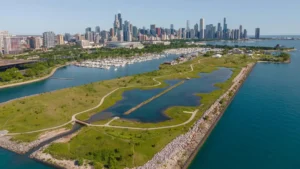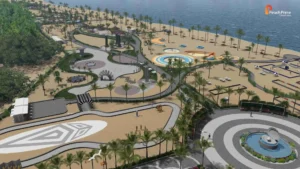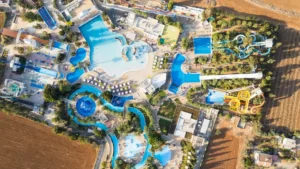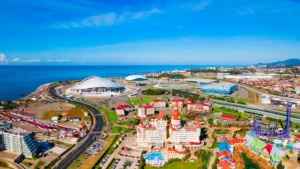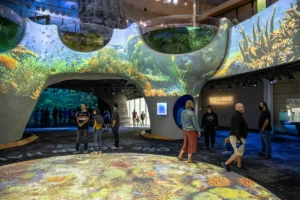Blogs
Designing a Master Plan for Aquariums: Tips for Creating Immersive Marine Experiences
Aquariums are more than just collections of aquatic creatures. They offer a window into the underwater world, showcasing the beauty of marine life, educating the public, and promoting conservation efforts. Designing a master plan for an aquarium requires a combination of aesthetic creativity, technical expertise, and a deep understanding of the marine environment. A successful aquarium should provide an immersive experience for visitors while ensuring the well-being of its marine inhabitants.
In this blog, we will explore the essential tips for designing a master plan for aquariums, from creating realistic aquatic environments to integrating cutting-edge technology that enhances visitor engagement.
Establishing a Clear Vision for the Aquarium
The first step in designing a master plan for an aquarium is establishing a clear and compelling vision. This vision will shape every aspect of the aquarium, from the types of exhibits to the overall architectural design. Consider the following:
- Educational Goals: What do you want visitors to learn about marine life? The educational aspect should guide the themes of the exhibits, such as marine ecosystems, endangered species, or environmental conservation.
- Theme: Decide on a central theme for the aquarium. Will it focus on local marine life or feature exhibits from around the world? The theme will influence the design of each zone and exhibit area.
- Target Audience: Who will be visiting your aquarium? Understanding the age range and interests of your visitors will help you create a space that caters to their needs, whether it’s family-friendly exhibits or more specialized displays for marine enthusiasts.

Layout and Flow Design
A well-thought-out layout is essential for an aquarium to function smoothly and provide an immersive experience. The flow of visitors should feel natural and encourage exploration. Key considerations for layout include:
- Visitor Circulation: Ensure that the layout allows for easy movement throughout the space, guiding visitors from one exhibit to another without congestion. You can design pathways with gentle curves to create a more dynamic experience.
- Viewing Areas: Position viewing tanks at strategic points, ensuring that visitors can interact with exhibits from various angles. Larger tanks may benefit from 360-degree viewing platforms or tunnels that allow visitors to walk through and be surrounded by marine life.
- Zoning: Divide the aquarium into distinct zones based on different marine ecosystems, such as coral reefs, deep-sea habitats, or freshwater environments. Each zone can have a unique design, lighting, and ambiance to enhance the feeling of immersion.
Incorporating Immersive Exhibits
Immersive exhibits play a crucial role in captivating visitors and creating a memorable experience. To ensure a fully immersive environment, consider the following design elements:
- Themed Tanks: Design each tank to replicate the natural habitat of the species it houses. Use materials like rock, coral, and natural substrates to mimic the underwater environment. For example, a coral reef exhibit should feature vibrant colors, live coral, and a variety of fish species.
- Interactive Displays: Incorporate touch pools or interactive screens to engage visitors. These can provide additional information about the creatures in the tanks and allow people to learn more about the species, their behaviors, and the ecosystems they inhabit.
- Underwater Tunnels: An underwater tunnel, where visitors can walk through a tank surrounded by marine life, is one of the most exciting and immersive features an aquarium can offer. This experience allows visitors to feel as though they are entering the marine world itself.

Sustainability and Conservation Integration
An aquarium should also serve as a platform for environmental awareness and conservation efforts. Design features that emphasize sustainability and conservation, such as:
- Eco-Friendly Materials: Use sustainable and non-toxic materials in the aquarium’s construction, ensuring that both the environment and the marine life are protected.
- Energy Efficiency: Incorporate energy-saving technologies such as LED lighting and energy-efficient filtration systems to minimize the aquarium’s ecological footprint.
- Educational Programs: Include educational exhibits that promote marine conservation, endangered species protection, and sustainability in the marine industry. Provide visitors with actionable tips on how they can contribute to marine conservation efforts.
Incorporating Technology for Enhanced Experiences
To create a truly modern aquarium, integrating technology is key. From interactive exhibits to real-time data, technology can enrich the visitor experience. Consider these ideas:
- Augmented Reality (AR) and Virtual Reality (VR): Use AR and VR technologies to offer virtual underwater explorations, allowing visitors to experience the ocean in ways that are not possible in a physical aquarium.
- Projection Mapping: Create stunning visual displays using projection mapping to bring static exhibits to life. For example, you could project moving underwater scenes or information about specific marine species onto the walls or tanks.
- Mobile Apps: Develop an aquarium mobile app that offers interactive maps, educational resources, and real-time updates about marine life. Visitors can learn more about the exhibits through the app and even track species or exhibits they’ve already seen.
Consideration of Marine Life and Aquatic Systems
While the visitor experience is essential, the well-being of the marine life should be the top priority. Ensure that the aquarium’s design considers the following:
- Aquatic Life Support Systems: Install state-of-the-art filtration, water circulation, and lighting systems to ensure the health of the aquatic species. Temperature, salinity, and pH levels must be carefully monitored and controlled to replicate natural conditions.
- Animal Welfare: Design exhibits that allow animals to express natural behaviors. This could involve creating tanks with hiding spots, swimming space, and features that mimic their natural habitats.
- Quarantine Areas: Provide designated areas for quarantining new arrivals or ill animals to prevent the spread of diseases.
Visitor Amenities and Services
For a truly successful aquarium, it’s important to provide additional amenities and services to ensure a comfortable and enjoyable experience for all visitors:
- Cafes and Restaurants: Design dining areas that provide a relaxing atmosphere, ideally with a view of marine life. Seafood-based menus or ocean-inspired cuisines can also add to the theme of the aquarium.
- Souvenir Shops: Create retail spaces that allow visitors to take home mementos. Include educational books, toys, or eco-friendly merchandise.
- Accessible Facilities: Ensure that the aquarium is accessible to all visitors, including those with disabilities. Offer wheelchair access, sensory-friendly exhibits, and assistive technologies where possible.

Designing a master plan for an aquarium requires creating an immersive, educational experience that emphasizes sustainability and animal welfare. A well-designed aquarium not only captivates visitors but also nurtures a greater understanding and respect for marine life. Whether you envision this experience in cities like London, Paris, Berlin, Rome, Madrid, Moscow, Istanbul, Athens, Amsterdam, Vienna, Prague, Budapest, Lisbon, Brussels, Warsaw, Stockholm, Zurich, Copenhagen, Oslo, Helsinki, Bucharest, Belgrade, Zagreb, Ljubljana, Tallinn, Reykjavik, Skopje, Tirana, Sarajevo, Sofia, Chisinau, Podgorica, Vilnius, Riga, Kiev, Monaco, Andorra la Vella, Luxembourg City, Cardiff, Porto, Geneva, Antwerp, Milan, Lyon, Barcelona, or Marseille, we are ready to expand and bring the wonders of the ocean to life.
At Peach Prime Consultancy, we specialize in crafting innovative, customized aquarium designs that bring the beauty and wonder of the ocean to life. We specialize in budget planning and cost estimation to ensure your project stays within financial expectations. By providing a detailed breakdown of the total project cost. Contact us today to discover how we can help you create the aquarium of your dreams.


